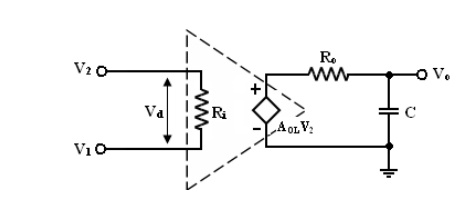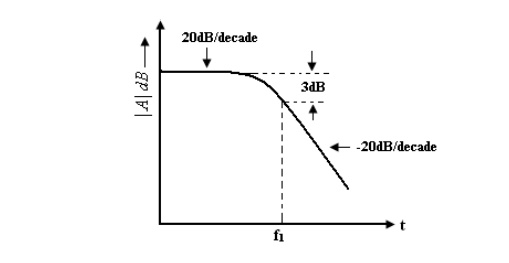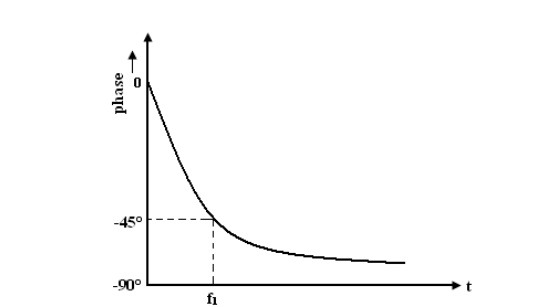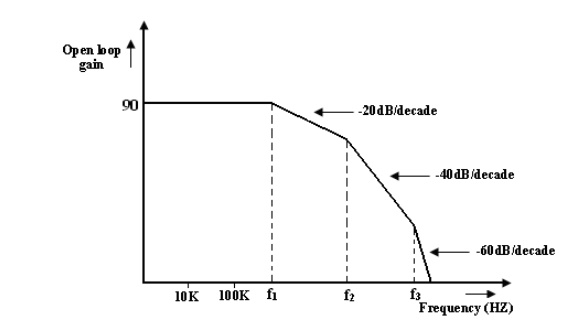For small signal sinusoidal (AC) application one has to know the ac characteristics such as frequency response and slew-rate.
Frequency Response:
The variation in operating frequency will cause variations in gain magnitude and its phase angle. The manner in which the gain of the op-amp responds to different frequencies is called the frequency response. Op-amp should have an infinite bandwidth Bw =∞ (i.e) if its open loop gain in 90dB with dc signal its gain should remain the same 90 dB through audio and onto high radio frequency. The op-amp gain decreases (roll-off) at higher frequency what reasons to decrease gain after a certain frequency reached. There must be a capacitive component in the equivalent circuit of the op-amp. For an op-amp with only one break (corner) frequency all the capacitors effects can be represented by a single capacitor C. Below fig is a modified variation of the low frequency model with capacitor C at the o/p.

There is one pole due to R0 C and one -20dB/decade. The open loop voltage gain of an op-amp with only one corner frequency is obtained from above fig.
f1 is the corner frequency or the upper 3 dB frequency of the op-amp. The magnitude and phase angle of the open loop volt gain are fu of frequency can be written as,
The magnitude and phase angle characteristics from eqn (29) and (30)
1. For frequency f<< f1 the magnitude of the gain is 20 log AOL in dB.
2. At frequency f = f1 the gain in 3 dB down from the dc value of AOL in dB. This frequency f1 is called corner frequency.
3. For f>> f1 the fain roll-off at the rate off -20dB/decade or -6dB/decade.


From the phase characteristics that the phase angle is zero at frequency f =0.
At the corner frequency f1 the phase angle is -450 (lagging and a infinite frequency the phase angle is -900 . It shows that a maximum of 900 phase change can occur in an op-amp with a single capacitor C. Zero frequency is taken as te decade below the corner frequency and infinite frequency is one decade above the corner frequency.


